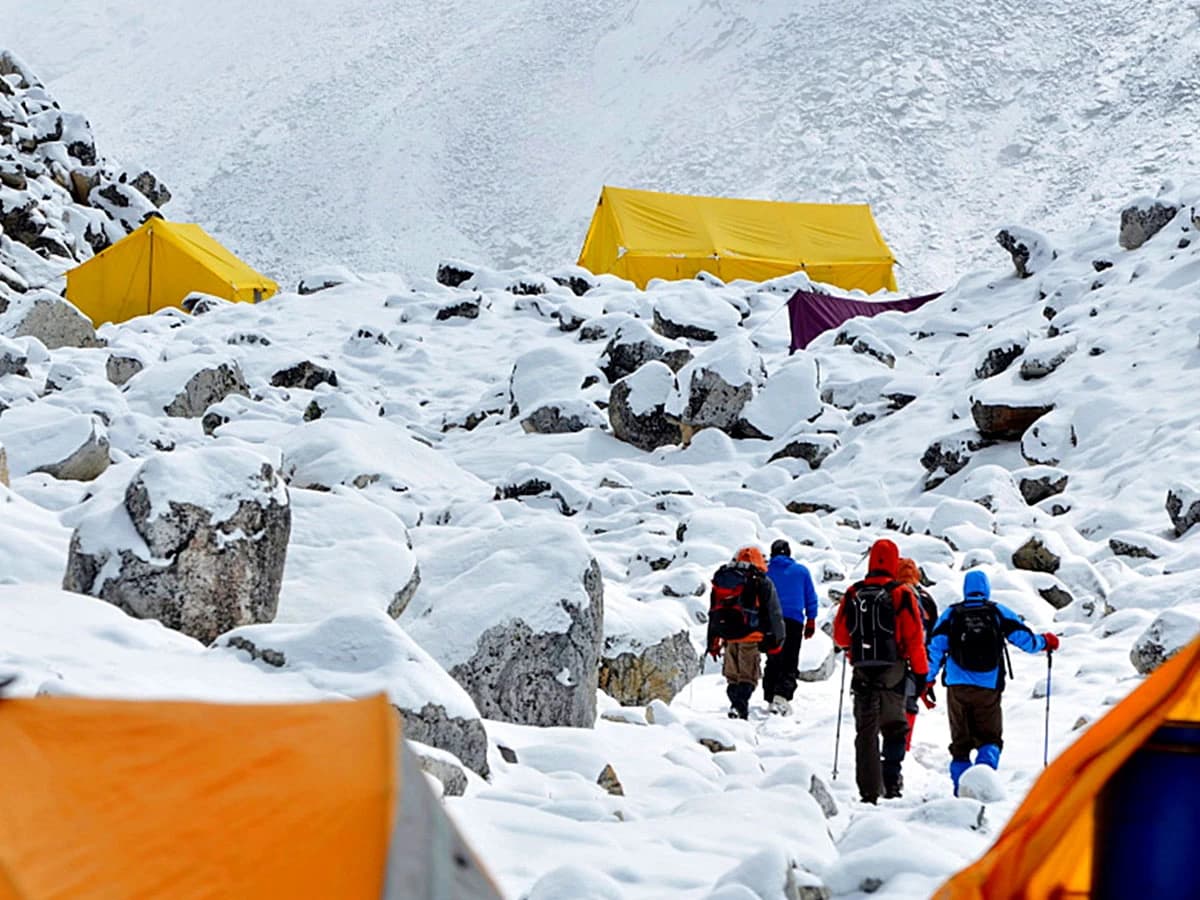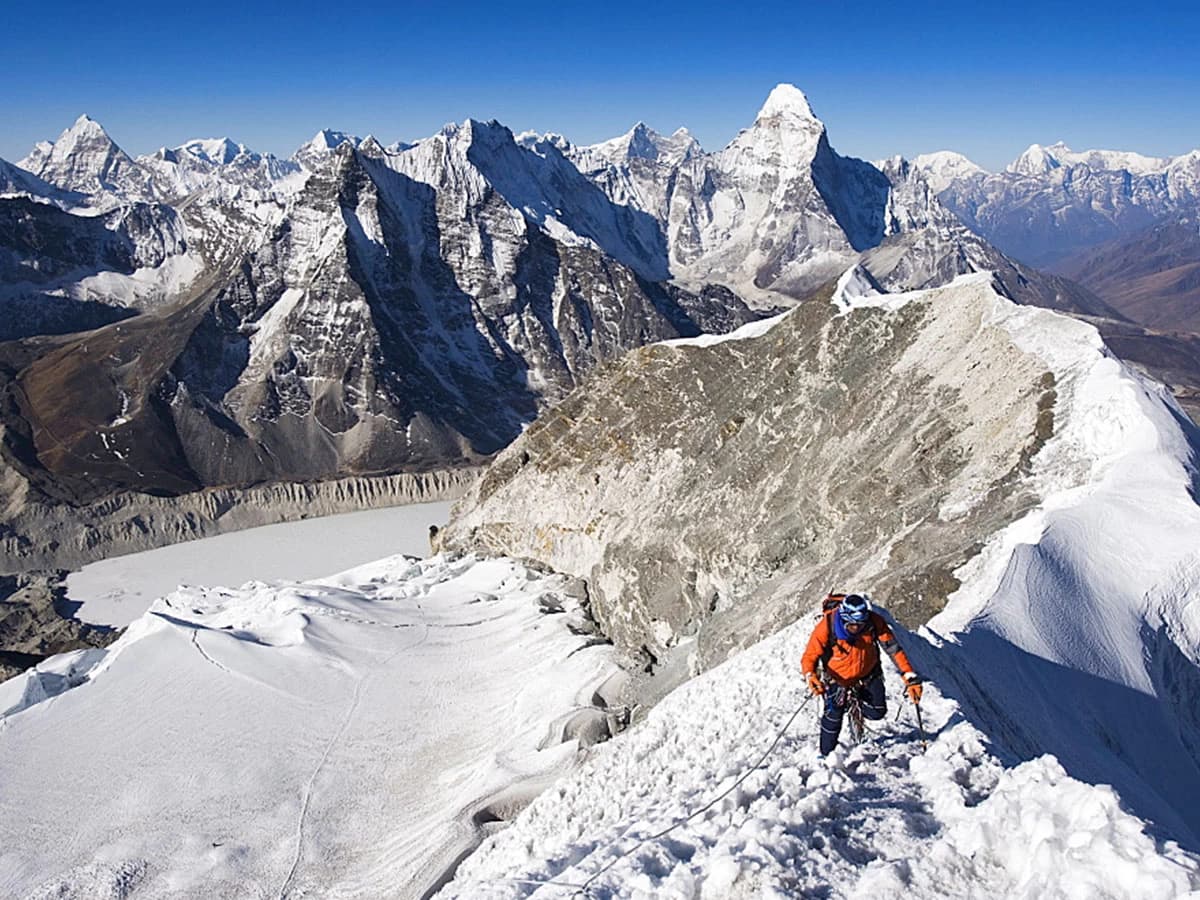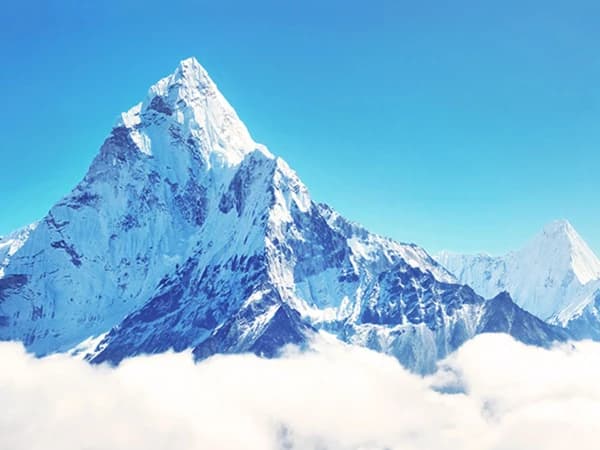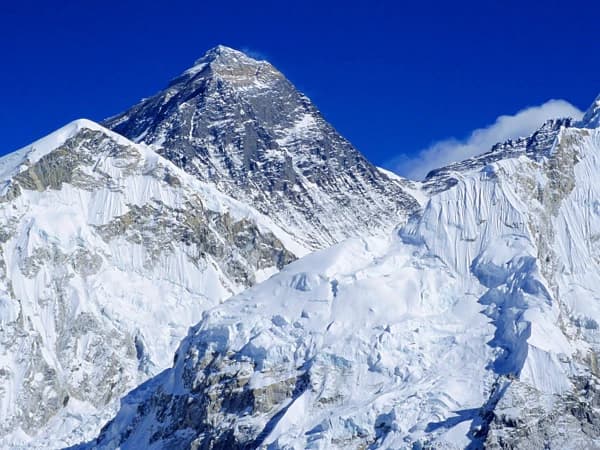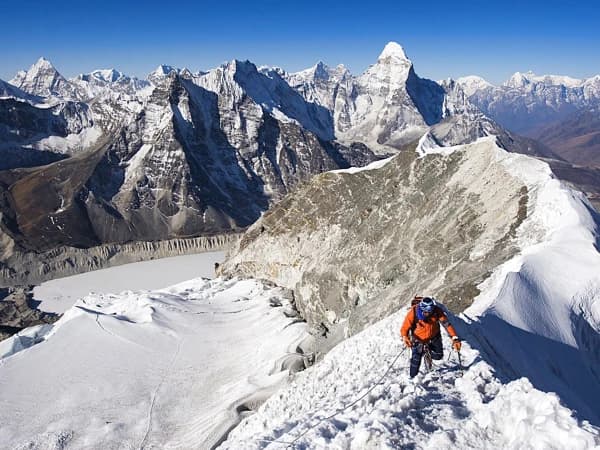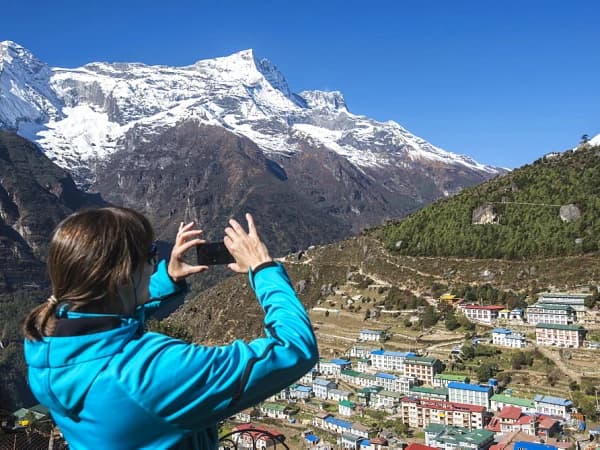Island Peak, or Imja Tse (6,189m), is one of the most popular trekking peaks in Nepal’s Khumbu region, renowned for its stunning scenery, accessible climbing experience, and sense of accomplishment. Ideal for adventurers looking to experience high-altitude climbing, Island Peak is often considered a stepping stone for future expeditions to more technical peaks.
Island Peak, named by Eric Shipton due to its appearance as an island in a sea of ice, offers a dramatic setting amidst the high Himalayan peaks. Although classified as a trekking peak, Island Peak provides real mountaineering challenges, making it a rewarding climb for trekkers who have some experience at high altitudes and are looking to develop their technical climbing skills.
The peak is commonly climbed as an add-on to the classic Everest Base Camp Trek, making it accessible and popular among trekkers seeking an achievable yet thrilling summit experience.
The journey typically begins with a scenic flight from Kathmandu to Lukla, followed by a trek through iconic Sherpa villages like Namche Bazaar, Tengboche, and Dingboche. After reaching Chhukung (4,730m), the trail branches off toward Island Peak Base Camp (5,200m). Trekkers acclimatize along the way, often spending additional days at higher villages to ensure their bodies adjust to the altitude.
The summit day begins pre-dawn, as climbers make their way through rocky ridges, snowy slopes, and glacier crossings. After navigating crevasses with fixed ropes, climbers reach the challenging summit ridge, where they use ice axes and crampons to ascend the final section. The climb is steep and technical, but the summit rewards climbers with panoramic views of the Everest region, including Lhotse, Makalu, Nuptse, and Ama Dablam.
From Island Peak’s summit, climbers are rewarded with expansive views of the Everest region, including towering giants like Lhotse, Makalu, and Ama Dablam. The feeling of standing atop the peak with these colossal mountains surrounding you is unforgettable and adds immense satisfaction to the climb.
Although classified as a trekking peak, Island Peak offers several technical sections, particularly the glacier crossings, crevasse navigation, and a steep 100-meter headwall leading to the summit. Using ropes, crampons, and ice axes, climbers gain practical experience with basic mountaineering techniques, making it an ideal peak for those looking to gain skills for more advanced climbs.
The route to Island Peak takes trekkers through traditional Sherpa villages, including Namche Bazaar and Tengboche, where trekkers can experience Sherpa culture, hospitality, and spirituality. Tengboche Monastery, one of the region’s most significant monasteries, offers a spiritual pause amidst the rugged landscapes, enriching the overall journey.
The trek to Island Peak is designed to allow climbers ample time to acclimatize, ensuring a safer and more enjoyable climb. Trekkers stay in higher villages like Dingboche and Chhukung to acclimatize gradually, which reduces the risk of altitude sickness and prepares climbers physically and mentally for the high-altitude challenges of the climb.
Many climbers choose to combine Island Peak with a trek to Everest Base Camp, creating a once-in-a-lifetime experience that includes a visit to the world’s highest mountain base camp. This combination not only adds an iconic element to the trip but also allows for additional acclimatization and an even deeper exploration of the Everest region.
The best seasons for Island Peak climbing are spring (March to May) and autumn (September to November). These periods offer stable weather, clear skies, and milder temperatures, making the climb safer and more enjoyable. Spring is especially beautiful, with blooming rhododendrons along the trails, while autumn offers clear post-monsoon views.
Climbing Island Peak requires a good level of fitness and some basic mountaineering skills. While it’s accessible to beginners with some high-altitude trekking experience, previous use of crampons, ropes, and ice axes is beneficial. Training in aerobics, strength, and endurance is recommended for a successful climb.
Island Peak Climbing is an ideal adventure for those seeking a mix of trekking and mountaineering in the Himalayas. The technical challenges, cultural richness of Sherpa villages, and awe-inspiring mountain views make Island Peak an exceptional experience. With its accessibility, moderate difficulty, and unforgettable scenery, Island Peak serves as a memorable climb and a gateway to high-altitude mountaineering.
Highlights
- Summit Island Peak (6,189m), is one of Nepal's most famous trekking peaks.
- Enjoy breathtaking panoramic vistas of Everest, Lhotse, and Makalu.
- Experience the thrill of technical climbing on snow and ice slopes.
- Explore Sherpa villages and monasteries along the trekking route.
- Receive expert guidance from experienced climbing guides and support staff.
- Challenge yourself and achieve a significant mountaineering milestone.
- Trek through stunning landscapes of the Everest region, including rhododendron forests and high-altitude valleys.
- Create lifelong memories amidst the awe-inspiring beauty of the Himalayas.

